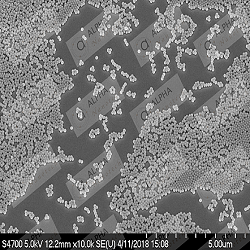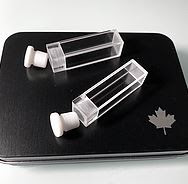Samples for spectroscopic and
fluorescence measurements are held in cuvettes and cells, which are constructed
from materials like plastic, quartz glass, and optical glass. Rectangular
cuvette cells are the most typical forms used in analytical chemistry. All of these
rectangular cells can fit the cell holders of almost any brand of spectroscopic
equipment because of the cuvettes' exact design and fabrication tolerances.
 |
| Quartz Cuvettes With PTFE Caps |
The thickness of each of the common
cuvette windows must be around 1.25 mm. The interior
volume that stores the sample is referred to as the micro/macro cuvette cell.
The internal width of these cells is 10 mm, their length must be
(0.2/0.5/1/2/5/10/20/30/40/50/100mm) times the optical path length, and their
height is 45 mm. Teflon lids and two polished windows are included on the
cuvette cells for spectroscopic and absorption experiments. To reduce stray
light, the opposite sides are frosted. High temperature quartz is heated, and
after applying pressure, the pieces are joined together. Compared to cuvettes
created in other ways, such as by being bonded together, UV quartz cuvettes
made using this process have substantially stronger chemical resistance and a
longer lifespan. Go ahead! And explore the world class benefits and advantages
of the unrivaled and peerless Ultraviolet
quartz cells with PTFE screw caps and septa and quartz cuvettes with PTFE caps.





